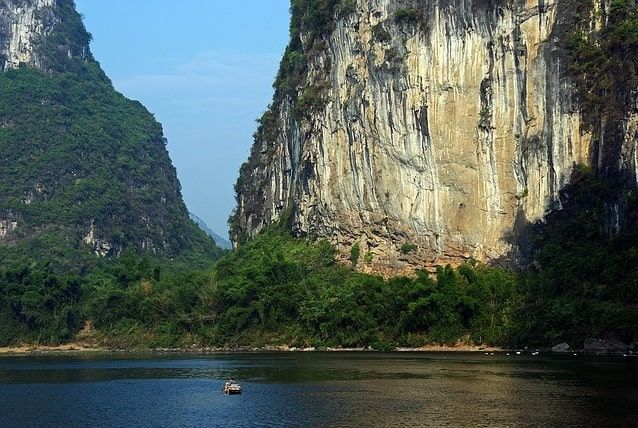10 natural wonders of Mexico you can't miss
From a pink lagoon to a natural basement where you can watch millions of birds in a synchronized flight.

In Mexico, there are places sculpted by nature that will steal your breath, even some of them have been declared World Heritage by UNESCO. From a pink lagoon to a natural basement where you can watch millions of birds in a synchronized flight. Here is a list of 10 wonders in Mexico that will make you feel happy.
Escondida Beach
The archipelago of the Islas Marietas, in the Riviera Nayarit, is made up of two main islands: long and round; in the latter is the Playa Escondida, also known as "Playa del Amor" (Beach of Love). It looks like a crater that lets a small beach appear, so the only way to get to this paradisiacal place is by swimming through a tunnel of volcanic rock. It shelters more than 90 species of birds, as well as coral reef ecosystems. The destination was declared a National Park and World Heritage Site by UNESCO in 2005. To maintain the place, there are restrictions to enter the beach a permit is required and hire an authorized tour operator.
The basement of the Swallows
This subterranean natural abyss, located in San Luis Potosí, has a depth of almost 500 meters. Its interior is home to millions of swifts and parrots. Every day, at the point of 5:30 in the morning, the birds leave at the same time in a spiral, offering a spectacle of synchronization. You can rappel down when the species are no longer in the basement, always in the company of an expert.
Tamul Waterfall
It is another of the natural wonders of the state of San Luis Potosí. It emerges from the Gallinas River and has a drop of 105 meters high. It stands out for its turquoise blue waters. In the ejido El Naranjito, there is a viewpoint for you to appreciate it from above. You can also rappel down to the waterfall.
Revillagigedo Archipelago
It is located in the state of Colima. It consists of 4 islands: Socorro, guarded by the Everman volcano; Clarión, declared a Biosphere Reserve; San Benedicto, where it is possible to swim with humpback whales from November to March, and Roca Partida, where you can practice scuba diving to observe whale sharks. This destination was declared a World Heritage Site by UNESCO in 2016.
El Pinacate and Gran Desierto de Altar
This reserve is located in the state of Sonora. In 2013 it was declared a World Heritage Site by UNESCO. NASA used this place as training for astronauts before the first trip to the moon. In the area, several craters can be explored. There are also 56 species of mammals.
Copper Canyons
They are found in Chihuahua, in the Sierra Tarahumara. This destination is made up of seven ravines. Its name is due to the reddish color of its walls. Their inhabitants are of rarámuri origin, some of them make tours to know their landscapes, caves where they live, and traditions. Here is Basaseachi, the highest permanent waterfall in the country and also one of the highest in the world.
Sumidero Canyon
This National Park is located 5 kilometers from Tuxtla Gutiérrez, Chiapas. It was formed 70 million years ago right in the middle of the Grijalva River. It has five viewpoints to contemplate it, one of them is El Roblar, which is located 1,200 meters above sea level. You can also go on boat tours to observe its species and fauna.
The Finger of God
It is located on a beach of intense waves called Maruata, on the coast of Michoacán. It receives this name because of its shape that seems to point to the sky. From July to March, black turtles arrive at the beach. You can practise surfing, take boat rides or go horseback riding.
Hierve el Agua
It is located in the Sierra Mixe and Sierra Norte of Oaxaca. The runoff of water with high mineral content formed the set of three petrified waterfalls. Two of them have vertical fall and the third, called Amphitheater is horizontal. The highest cascade has a fall of 60 meters high. Only in Pamukkale, Turkey is there another form of similar water wells.
The Coloradas
In this locality of Yucatan, there are lagoons where the water turns pink. This color can only be observed between July, August, and March and is due, above all, to the concentration of salt and the existence of microorganisms. It belongs to the Ría Lagartos Biosphere Reserve. In the area, you can find a lot of pink flamingos.




